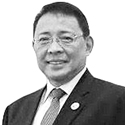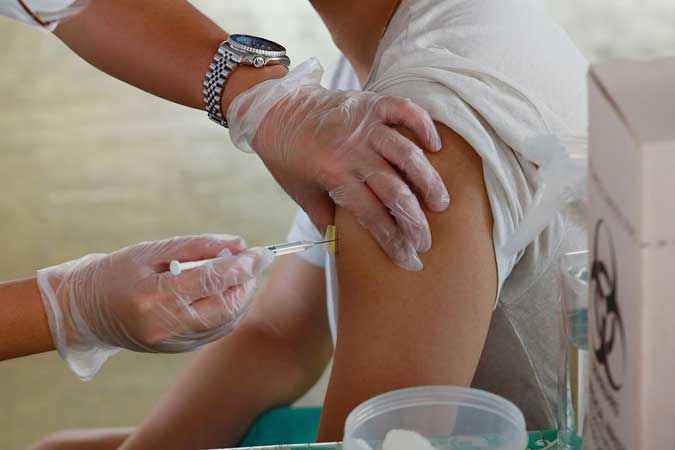
Signs and Wonders
By Diwa C. Guinigundo

The health pandemic has necessary global and cooperative dimensions. In April last year, the IMF noted the $8 trillion fiscal actions across the globe with support from massive monetary measures. The Fund itself pursued its own assistance program to member countries. Yet some impoverished countries continue to grapple with the consequences of the health crisis on poverty and social inequality. In hindsight, this international response hardly sufficed because the world remains open to a second or a third wave of infection.
Perhaps the early guidance from the Fund missed on something very fundamental to ensure that the pandemic is flattened across the globe within a collaborative framework. Through its Managing Director Kristalina Georgieva, the Fund outlined in a four-point plan its strategy in building the road to recovery. The first in the list was the essential containment measures and support for health systems. The second consisted of large, timely, targeted fiscal and financial sector measures to protect people and firms. The third involved reducing stress to the financial system to avoid contagion across borders. The final point reiterated the need for focus on economic recovery by reducing potential economic scarring through prompt policy action.
What is missing from the list?
While the Fund was a strong advocate of sustaining the flow of vital goods through minimal disruption to supply chains and restraint in export controls on medical supplies and food, we do not recall seeing a more basic strategy of ensuring a democratic rollout of vaccines to all countries being part of it.
It was to be outside Washington that COVID-19 Vaccines Global Access (COVAX) had to be born. It is one of the three pillars of the Access to COVID-19 Tools (ACT) Accelerator launched in April last year by the World Health Organization (WHO), Global Alliance for Vaccines (GAVI) and the Coalition for Epidemic Preparedness Innovations (CEPI) to help manage the pandemic. Almost all relevant government, health, corporate, academic, philanthropy and science sectors are represented. This is considered to be the ultimate global solution to the pandemic because it ensures equitable access to the vaccines by all countries, regardless of income levels.
GAVI coordinates COVAX activities in research, development and manufacture of vaccines and leads in negotiated pricing to the benefit of all member countries.
COVAX is essential because there is real risk that millions of people around the world would not even have a single jab of protection. Without vaccines, the viral surge will continue and mutation will not stop. We may reach that point when the most effective vaccines will be useless against it.
Under this program, both self-financing economies and funded economies can participate and access will not be determined by countries’ ability to pay.
However, we could be skeptical about the progress and prospects of this international initiative.
In September last year, Oxfam International warned that a “small group of rich nations have bought up more than half the future supply of leading COVID-19 vaccine contenders.” The irony is that these rich nations accounted for only 13% of the world’s population. They had finalized deals with five leading vaccine candidates already in phase 3 clinical trials. These countries were smart to start early. Even if these drug companies maximize their capacity, they could only manage to produce vaccines for two-thirds or 61% of everyone on the planet, and this is possible only by 2022.
What is revolting about these pharmaceutical companies is that some of them have received billions of tax money but it was reported that they intended to make a killing by selling their output to these few rich nations which are prepared to procure them even at enormous premium.
The situation cannot be worse than the reported deal of the UK government covering five doses per head of its population while Bangladesh could manage to provide only one dose for every nine people. This is the reason why there has been a growing demand for a People’s Vaccine — something that would be available to everyone, free and distributed fairly based on actual need.
This was proposed to be done by rolling out a new approach “that puts public health first by sharing knowledge and maximizing supply.” Short of this means more deaths and economic disorder and recession condemning more people to extreme poverty. What is most surprising is the reported Oxfam computation that the estimated cost of providing vaccine for the earth’s population “is less than 1% of the projected cost of COVID-19 to the global economy.” This is possible only if, 1.) pharmaceutical companies share their vaccine knowledge, and, 2.) waive the cost of their patents. Production can be scaled up for global coverage.
This did not happen.
Three months later in December 2020, BBC News cited the People’s Vaccine Alliance saying nearly 70 lower-income countries would only be able to vaccinate one in 10 people. Yet other richer countries had already accessed protection of their citizens five times over.
During the first quarter 2021, unequal access to vaccines worsened rather than improved. According to Duke University’s Global Health Innovation Center, out of the 7.2 billion confirmed purchases of COVID-19 vaccines, 4.2 billion doses have been cornered by the wealthiest nations. In contrast, the African Union has procured only 670 million for 1.3 billion people. This means 60% of available vaccines went to only 16% of the world’s population.
This is vaccine nationalism at its worst.
It might be too late in the day but in January 2021, the Fund rolled out its view that equitable distribution and administration of vaccines — in addition to policy support — is key to financial stability. In its Global Financial Stability Report, the Fund warned that uneven distribution of vaccines was a risk especially for the frontier market economies. “Until vaccines are widely available, the market rally and the economic recovery remain predicated on continued monetary and fiscal policy support.”
This qualification by the Fund was crucial. The announcement of earlier-than-anticipated availability of COVID-19 vaccines enhanced the viability of market rally and business bounce back. But the Fund was correct in pointing out that for the rest of 2021, vaccine access was likely to be uneven and it would take time for a more equitable distribution to happen.
Obviously, the global community failed to heed the Fund’s belated call for multilateral cooperation to ensure equitable vaccine development and delivery across the world. This could definitely ensure a more durable global economic recovery.
But precisely because pandemic management turned out uneven and unequal, economic growth across the globe would not move together but diverge. The Fund’s World Economic Outlook of April 2021 concluded that the global economy was on firmer ground “but with divergent recoveries amid high uncertainty.”
It seems lost on the minority among nations enjoying more than full vaccine coverage of their population that faster recovery might be limited not only by the extent of policy support but also by how the battle between virus and vaccines would play out and how economic activity would adapt to subdued mobility. Uncertainty is charted by the path of the pandemic and the new variants of the virus. A bridge has to be built between “vaccine-powered normalization and the evolution of financial conditions.”
So lest it be forgotten, there is such a thing as a beggar-thy-neighbor policy in economics. Tariffs, quotas or sanctions by a country or a group of countries to address their own domestic woes could actually cause adverse effects on their neighboring countries. But the virus is not the speculative flow of Tobin; it is more vicious, it is more footloose. What is bad about cornering the bulk of the available vaccines in the market is that it would make one’s neighbors beggars. It could also make them sickly, with a harmful backlash to their rich neighbors and the rest of the world.
Diwa C. Guinigundo is the former Deputy Governor for the Monetary and Economics Sector, the Bangko Sentral ng Pilipinas (BSP). He served the BSP for 41 years. In 2001-2003, he was Alternate Executive Director at the International Monetary Fund in Washington, DC. He is the senior pastor of the Fullness of Christ International Ministries in Mandaluyong.